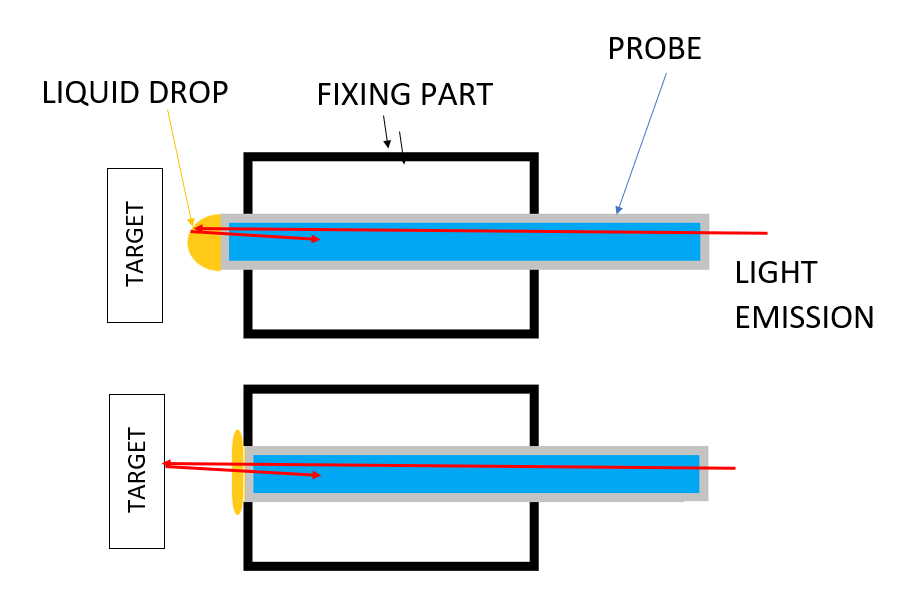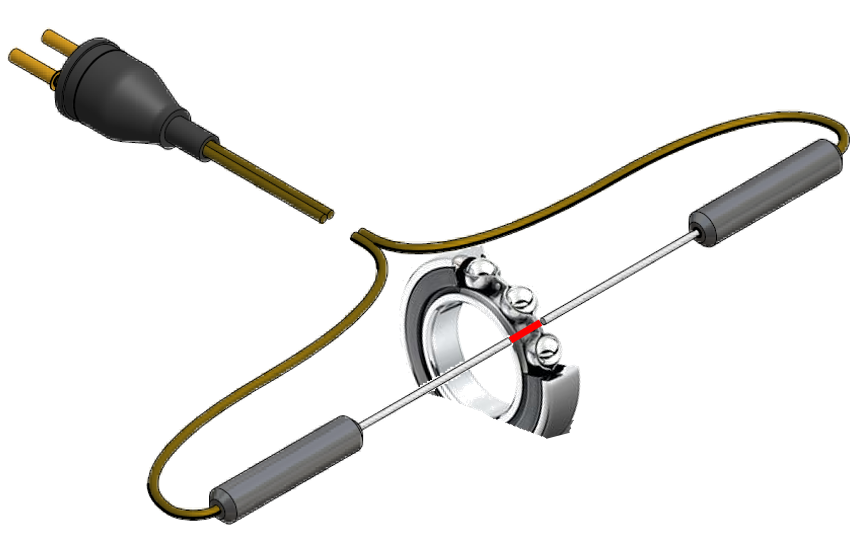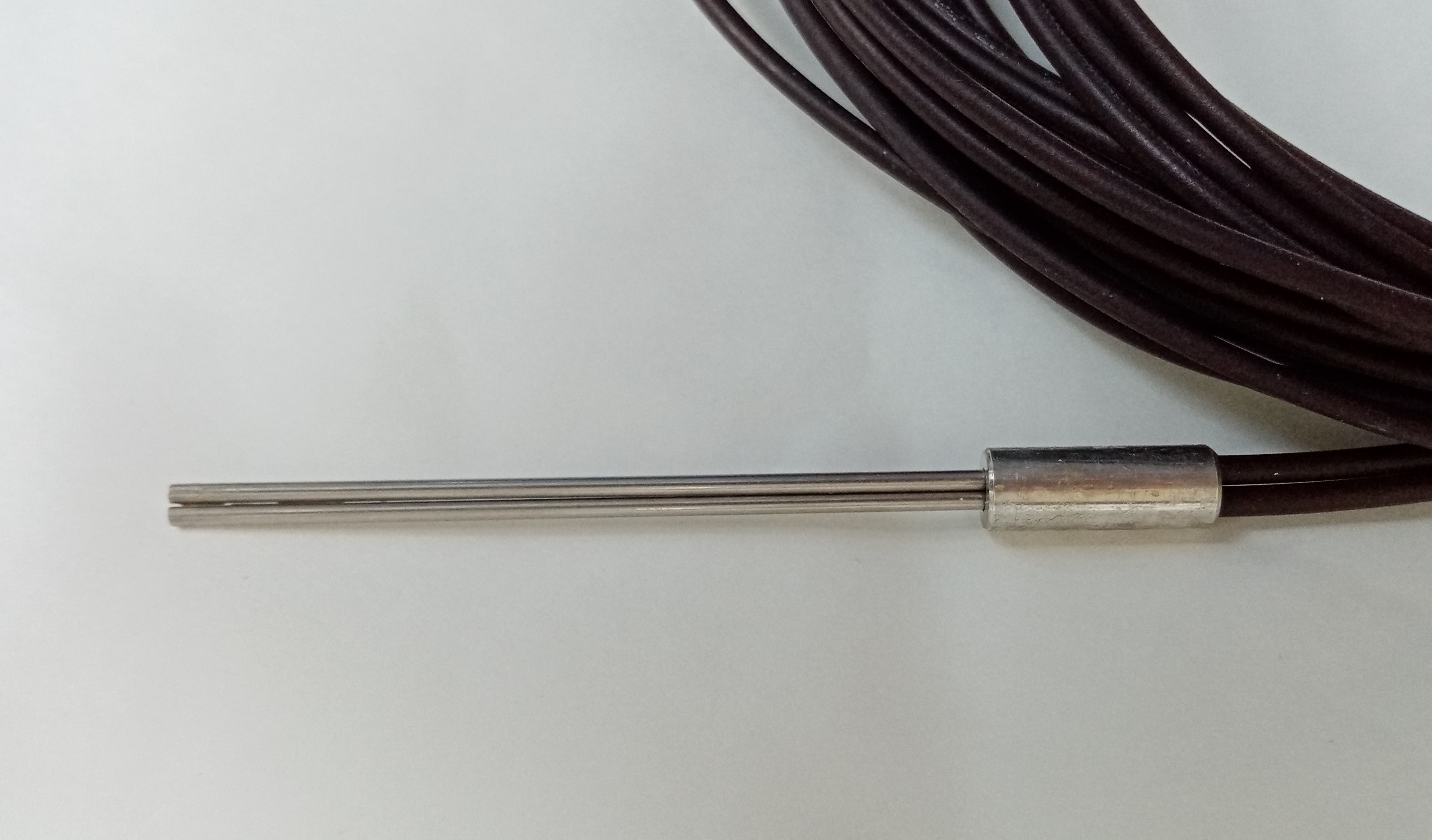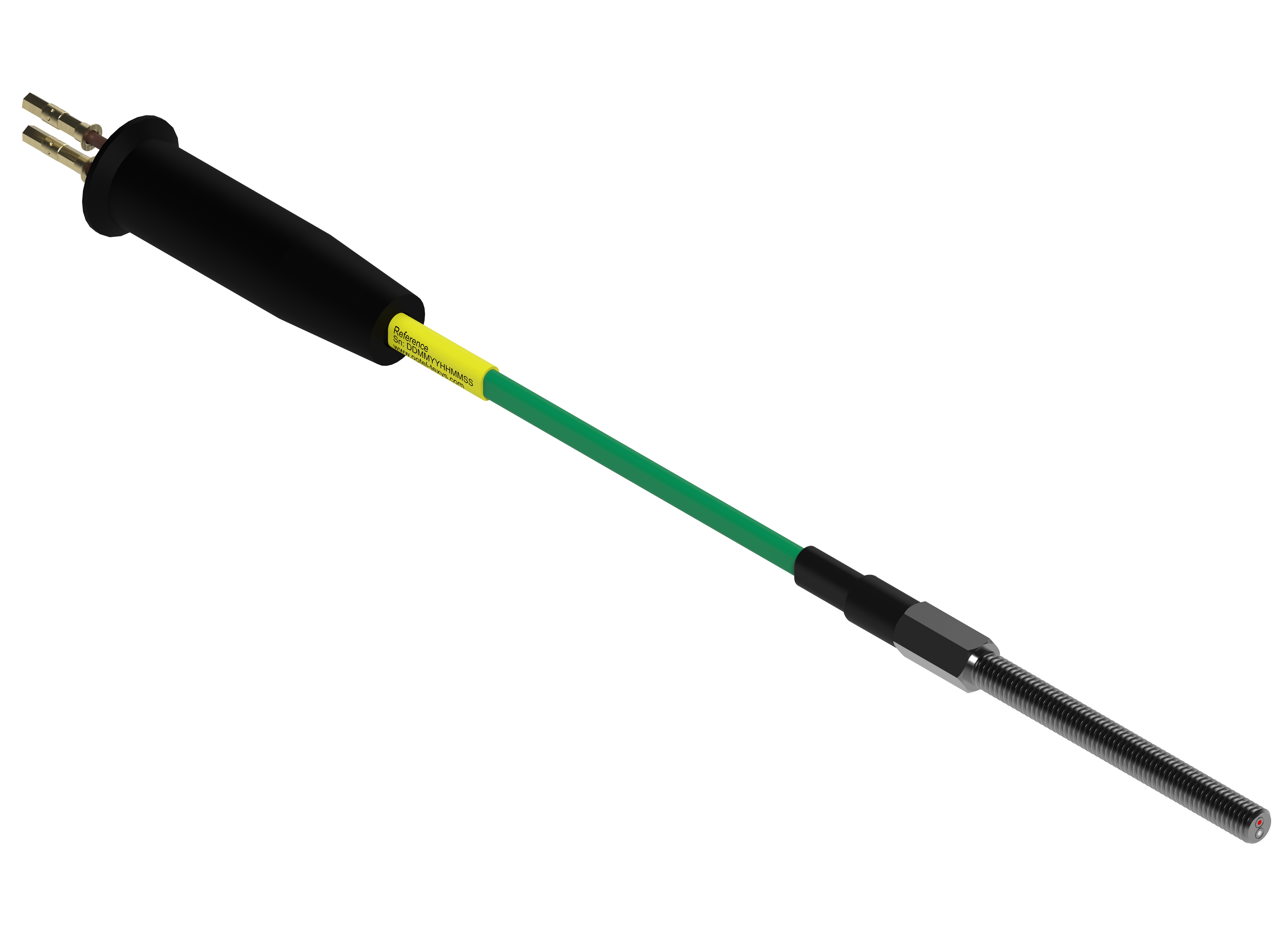
OPTICAL SENSOR FOR DETECTION IN LIQUIDS
Very often, users are reluctant to use our optical detection solutions when they have to work in environments where liquids are omnipresent.
However, you will see in this article that technical solutions exist to overcome these problems and assist the customer in his choice.
In diffuse reflection mode, used in most applications, the two channels open at the tip of the probe, forming a single cylinder gathered in a tube.
First of all, it is necessary to remember that our optical probes have two distinct channels for the transmission of the near IR light, forward on one side and return on the other.

This drawing presents the theoretical split between the two channels in the tube.
In the presence of liquid on the surface, often taking the form of a drop, the light will reflect on the wall of the dioptre that forms this drop.
In some cases, it is easy to make the drop "transparent" by giving it a film shape which will consequently have a smaller thickness. Through this film, the light ray will be able to pass in both directions.
The view below shows how, by installing the tip flush with the surface of a fixture, the drop will spread out to become a film of liquid.

If this solution cannot be implemented, the other possibility is to use the so-called "Though-beam" detection method. The two light channels are separated in order to install them face to face.
The example on a ball bearing shows us the through-beam mounting. The surface area at the end of each probe is small, so the liquid drop is not large and thick enough to stop the propagation of the light.

A variant with these probes is a side-by-side installation, in parallel or each with an angle of view towards the object as shown in this picture.
When applications require angular velocity measurement on a part immersed in a liquid, our probe with integrated dioptre MULTI TBYO DL is able to detect the contrasting aeras of the part as shown in the view below (or the video).
For example, we have a customer who installed the probe in a turbine to measure the rotating speed by detecting the passage of the blades immersed in the fluid flowing through the turbine.
To conclude this overview of our solutions, we are proud to present the latest fibre optic probe developed by OPTEL TEXYS. It is the MULTI TBYO DUAL.
It gathers some design elements from the previously presented probes: separation of the two transmission channels and side by side installation as shown below.

It is distinguished by the placement of these channels in a cylinder in order to ensure their protection and to allow an easier fixing.
Total lengths are standard from 2 meters to 10 meters; longer lengths are available on request. The ending part is available in 40 mm or 60 mm with an M6 external thread with standard pitch.

Thanks to this design, the detection will not be obstructed by an environment with predominantly oil mist or any other liquid.
For more information, thank you to send your inquiry to contact@optel-texys.com.



